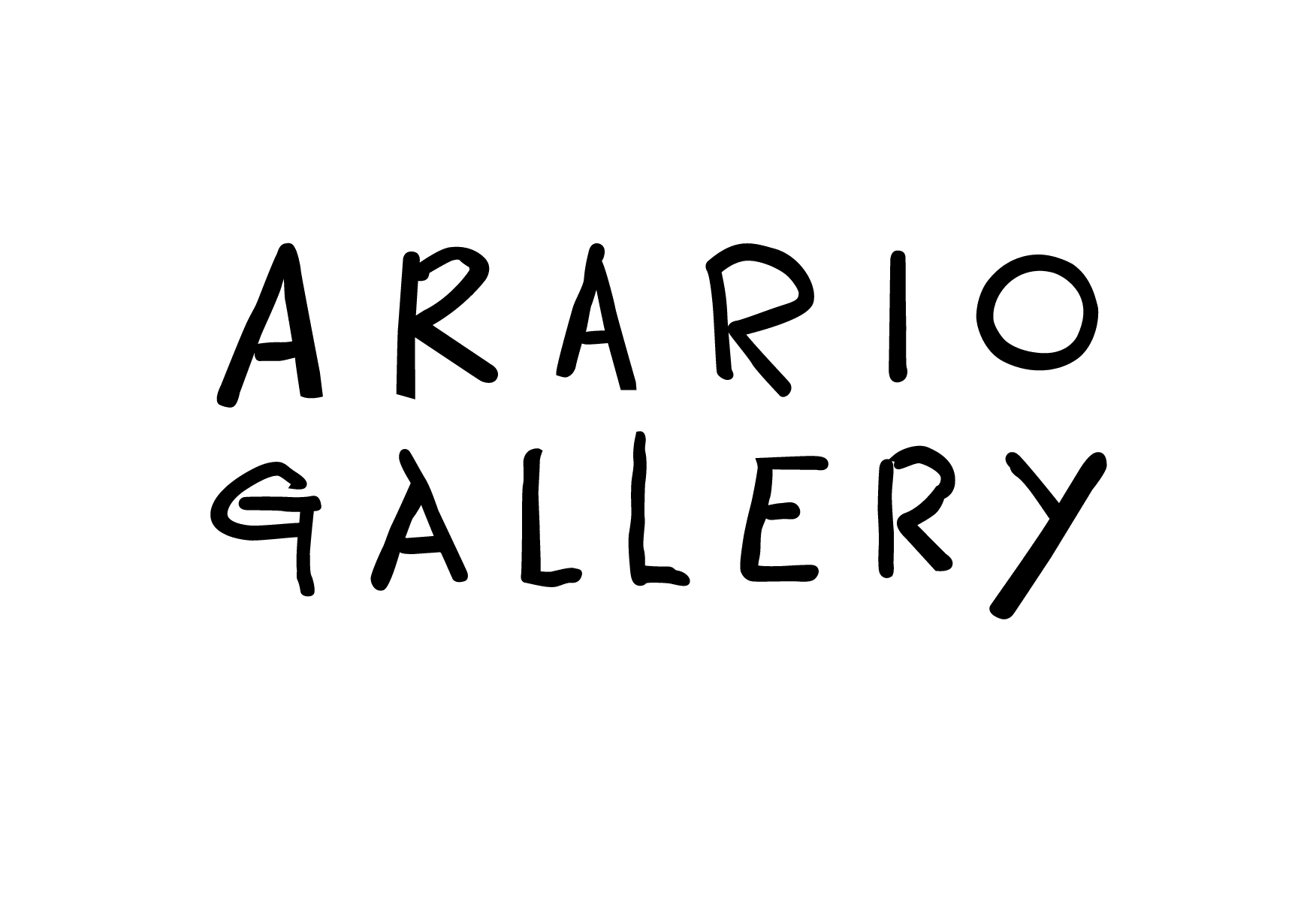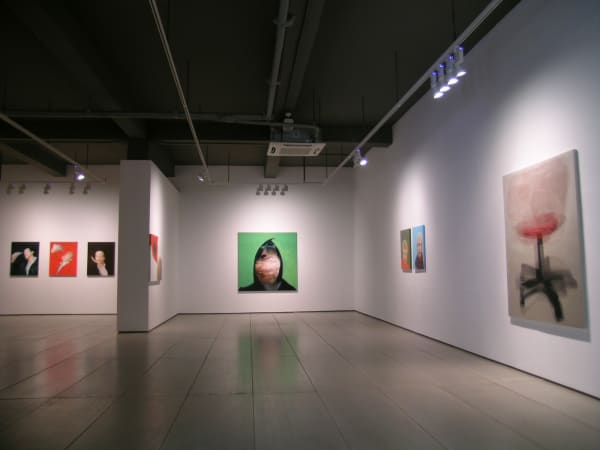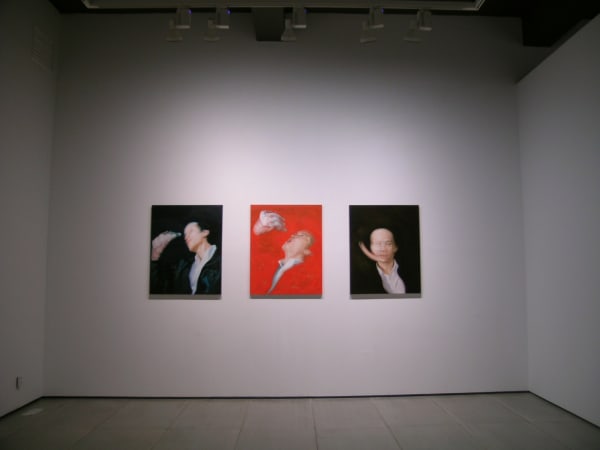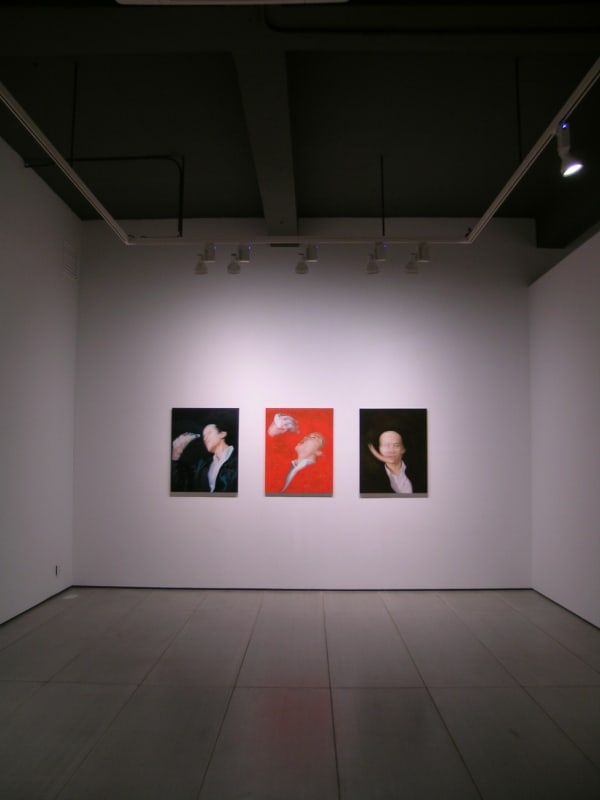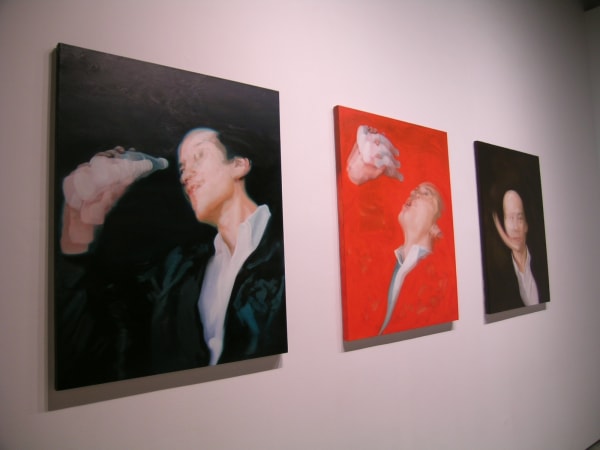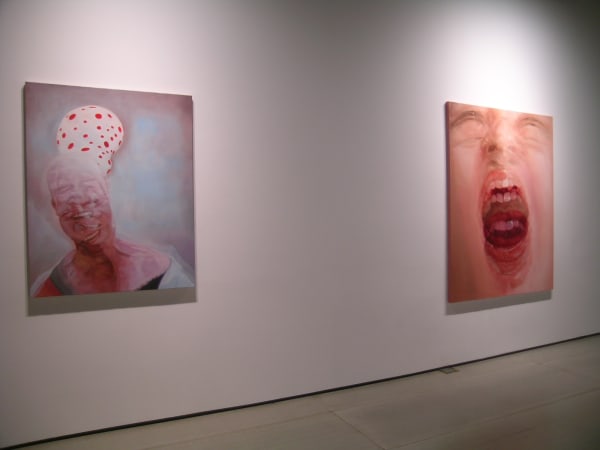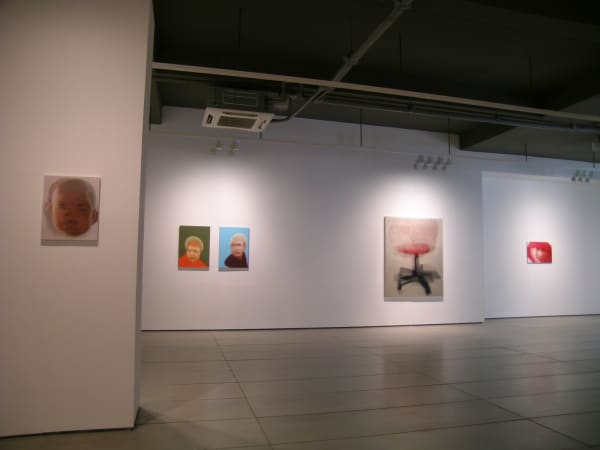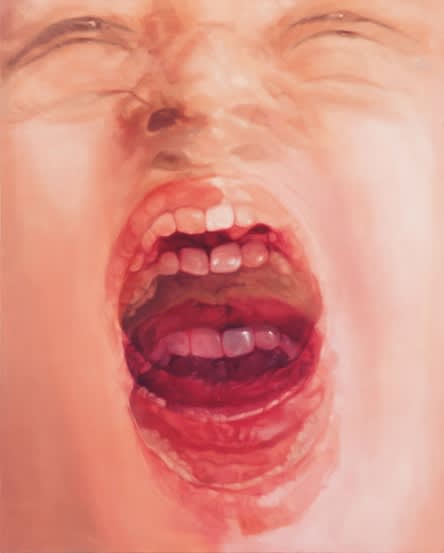KYUNG Sunghyun
Kyung Sunghyun's work has a diverse and layered narrative. His work is created through various frameworks, with one of the main foundations being about 'shakiness'. It's as if the image is shaky due to an incorrect over exposure on a photograph. In fact, Kyung Sunghyun's paintings reinvent the overexposed photographic image. However, his reinventions don't speak specifically about the shakiness of the image, nor does he emphasize that shakiness. To Kyung, shakiness blurs the shape, at the same time revealing his subject's true emotional and psychological state. At a closer look at his paintings, one finds that images of faces from different angles, such as frontal and side views, are superimposed upon one another. This expression exposes his desire to better reveal his subject in the portrait. Kyung chose to express his subjects as if they were shaking, in order to reveal the essential nature of a human being. His painting is not just simply an image; rather, it is the depiction of a three-dimensional phenomenon engravedin the human mind's eye. When we perceive the visual image of a person, we can perceive that person's peculiar emotional and psychological state. Through shaking the image, he further separates the subject from its process of being merely a representation of itself, and interrupts that immersive process in representation. Just as the image in the mind's eye becomes blurry as one approaches closer to an art work, Kyung's work asks the audience to view the work from a distance and perceive the overall emotional mood of the work by reading it as a pure image. This is the metaphor for transformation. Representing and transforming the image is like expressing the mood of the subject on a dark cave wall. Trembling and imperfect, the shaky image brings out the essence of the depicted subject. Ungraspable and hazy, but coming into a being; this is what Kyung sees as being the truth in his subject. The reasonfor the unclear outline of form in Kyung's work lies in the realization that his work is not about representing the form, but of depicting an image. Depicting the shaking image is Kyung's attempt to accurately capture the true image of his subject.
If by and large Kyung Sunghyun's work focused on expressing the shakiness of the people as his subject, he is also focused on shaking the matters around him in order to change the point of view of perception. That is to say that he converts the subject and its substitute. By fixing oneself firmly and shaking the world around, one starts to look at the world in a different light. In the eyes of the norm, the matters around them become the six-fingered. The six fingered person is considered by the society, to be abnormal and undeveloped.If the matters around me consider me as an outsider, then the shaking of the matters transforms into the shaking of the society itself. Now, the ego no longer trembles. That becomes a fixed entity, one perception, and the conditions that termed one as the six-fingered, start to shake. This is a reformed conversion. When the rocket charges into the mach speed, one can visually see the sound that comes from the speed through the trembling of the rocket wings. This is when the aural becomes visual. Similarly, when the society holds unto an abnormal point of view, it creates an abnormal ego, and the society itself becomes the abnormal six-fingered. This transcends the notion of conversion, into conquest. However, the problem about this conversion, rests on the fact that to the audience, both the people and the matters are shaking. All is perceived as shaking, when one simply no longer looks at the fact that the forms shake, and reaches the state of receiving the image. It's similar to the fact that the passengers in the rocket that has entered the mach speed cannot feel the vibration of the sonic boom that the audience outside can feel. Kyung's story is about the shakiness that the audience feels. The values that once labeled Kyung as the six-fingered and shook up his very core, extended into the very society that embraces him, until reaching the audience who look at his work. This phenomenon is a reality rather than a dreamscape. He realizes that all this is not a fantasy nor a dream but a reality. Art has always expressed imagination and creativity, and attempted to cure social illnesses and scars of the ego, but all of this is perceived in the light of reality. Nothing can escape reality. Steadying his dizziness and pressing down on the shutter, does Kyung already know that he is in fact capturing reality and not a fantasy?
